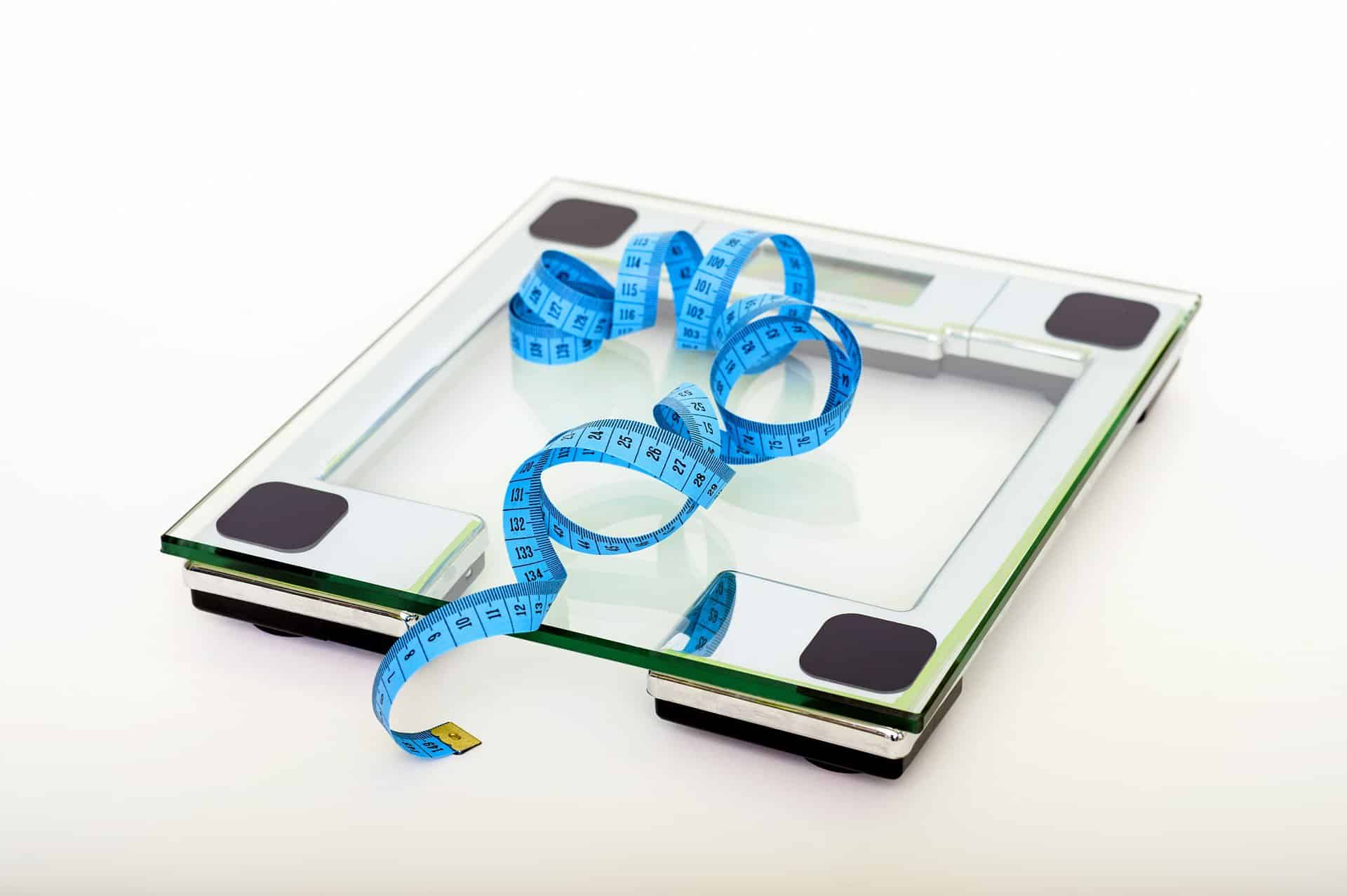Body Composition Scales: How well do at-home versions work?

You’re working out hard, exercising up a storm, and moving like never before. You just know you have lost weight. You step on the scale, and nothing! It hasn’t moved. How can this be? Your clothing is fitting better, but the scale hasn’t budged.
What’s likely occurred: fat has been lost and muscle has been gained.
Muscle weighs more than fat but takes up a smaller space (the main reason your clothing is fitting better!). This is a good thing. The more muscle you have, the higher your metabolism will be while at rest. What this translates into: with this extra muscle, even when you are just sitting still, you are burning more calories!
So besides smoothly sliding into your favorite jeans, you may be wondering if At-Home Body Fat Percent Scales are a more concrete way to track changes in composition. The answer is yes, and no!
How body composition scales work
Consumer-grade body composition scales use a method known as bioelectrical impedance and some calculations to determine the percentage of fat mass versus nonfat components (muscles, tendons, ligaments, bones, organs, etc.) within your body.
When stepping onto one of these hi-tech scales, or grasping a handheld version, a harmless electrical current is sent through the body. It works on the premise that electricity will flow easily through water, which your muscles and other nonfat components are largely made of, and will be impeded by fat, which has very little water content.
Total body water is determined, and then body fat percentage is calculated. In addition, most home scales provide other data such as estimated muscle and bone mass in pounds or kilograms, percent water weight, body mass index (BMI), and a recommended daily calorie budget.
How accurate are body composition scales?
The accuracy of these home devices has been the subject of many scientific studies and informal tests. In some cases, using the same subject to compare different consumer models to a standard, such as a BOD POD, variations in body fat percent ranged from 4 to 9 percent.
So what can be gleaned from these studies? If your body fat reads as 25% or 35%, it doesn’t really matter. The key information is whether your number has gone up or down over a few months. With consumer-grade scales, focus on the trend over time, not the actual body fat percent number.
How to get the best results
Measure at the same time each morning in a fasting state and after using the restroom. In addition, be mindful that body water is greatly influenced by factors such as exercise, medications, dehydration, and menstruation.
Follow these tips:
- Avoid measuring after eating, fluid intake, and / or exercise
- Salty food consumed the day before, can falsely appear as a muscle gain due to water retention
- Avoid stepping on the scale while experiencing drastic changes in body or environmental temperature
- Be cognizant that the menstrual cycle can cause fluctuations in measurements the week before and the week after a period
- Be aware that based on the type of machine you are using, sections of your body will not be measured. A handheld device measures the upper body, while a stand on scale model focuses on the lower body.
- If you are using a stand on device, make sure the soles of your feet are clean.
- Avoid skin touching skin while taking a measurement. Keep arms away from the sides of your body and if your thighs touch each other, put a towel between your legs to manage the current flow.
- Consult with your physician about any medications which may influence hydration status or blood pressure.
Take the reading with a grain of salt
You may encounter a handheld device at a health fair advertising to measure your body composition. Unless you have followed the information above, the number holds little value.
Food for thought
Just as you may be transitioning from a size 12 to a size 8 in your weight loss journey, consumer-grade body fat percent scales are another method to confirm changes are taking place.
While most scales will likely not provide an accurate body fat percentage number, because they are generally consistent, they can be used to monitor changes over time.
Ready to take the plunge?
Lose weight for good
References:
Buchholz AC, Bartok C, Schoeller DA. The Validity of Bioelectrical Impedance Models in Clinical Populations. Nutrition in Clinical Practice. 2004;19(5):433-446. doi:10.1177/0115426504019005433
Dehghan M, Merchant AT. Is bioelectrical impedance accurate for use in large epidemiological studies? Nutrition journal. https://www.ncbi.nlm.nih.gov/pmc/articles/PMC2543039/. Published September 9, 2008. Accessed March 24, 2019.
Frisard MI, Greenway FL, Delany JP. Comparison of Methods to Assess Body Composition Changes during a Period of Weight Loss. Obesity Research. 2005;13(5):845-854. doi:10.1038/oby.2005.97
Jebb SA, Cole TJ, Doman D, Murgatroyd PR, Prentice AM. Evaluation of the novel Tanita body-fat analyser to measure body composition by comparison with a four-compartment model. British Journal of Nutrition. 2000;83(02):115-122. doi:10.1017/s0007114500000155
Worley B, Messer S. Comparing the Accuracy of Body Fat Scales. ABC News. https://abcnews.go.com/Health/comparing-accuracy-body-fat-scales/story?id=40082433. Published June 24, 2016. Accessed March 24, 2019.
Xie X, Kolthoff N, Bärenholt O, Nielsen S. Validation of a leg-to-leg bioimpedance analysis system in assessing body composition in postmenopausal women. International Journal of Obesity. 1999;23(10):1079-1084. doi:10.1038/sj.ijo.0801034

